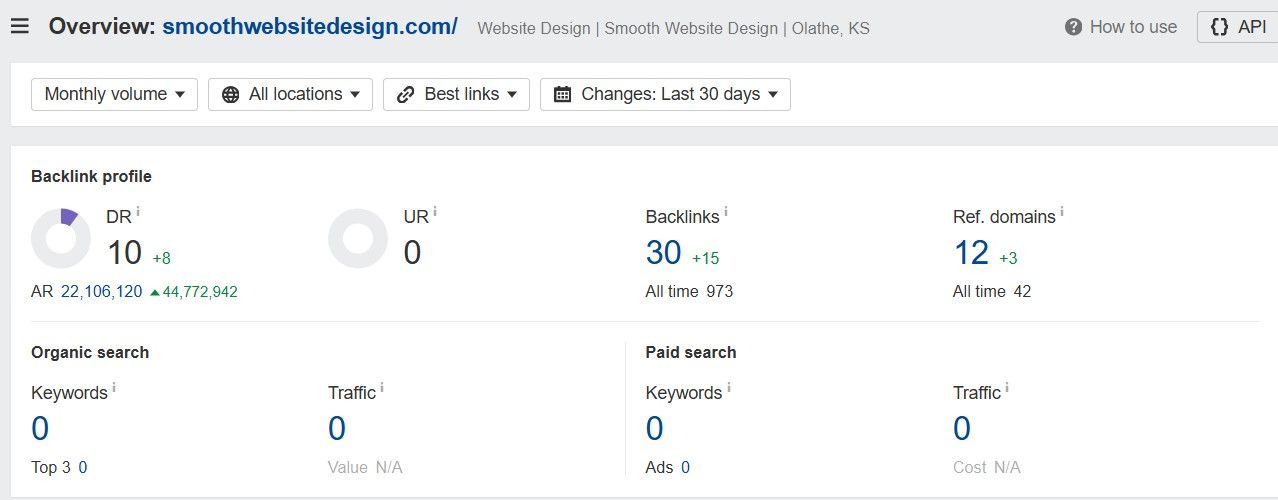SEO Backlink Best Practices: Boost Local Business Visibility Online
SEO Backlink Best Practices: Enhancing Online Visibility for Local Businesses

Backlinks remain a cornerstone of effective search engine optimization. These valuable connections from other websites to yours signal to search engines that your content is trustworthy and authoritative. Creating high-quality, unique content that naturally attracts backlinks is essential for improving your website's visibility in search results and driving more organic traffic.
Implementing a strong SEO strategy focused on earning quality backlinks can significantly boost your website's performance in search engine results pages (SERPs). This is particularly important for local businesses in Olathe, KS looking to enhance their online presence. By combining smooth website design with strategic backlink acquisition, you can create a powerful foundation for your digital marketing efforts.
Effective backlink building goes hand-in-hand with developing valuable, shareable content that addresses your target audience's needs. This approach not only improves your search rankings but also establishes your brand as a reliable source of information in your industry. As we explore best practices for SEO backlinks, you'll discover actionable strategies to elevate your website's authority and visibility in search results.
Maximizing SEO Through Backlink Best Practices
Effective backlink strategies are crucial for improving search engine rankings and driving organic traffic. Quality links from reputable sources signal authority to search engines and can significantly boost a website's visibility.
Understanding the Role of Backlinks in SEO
Backlinks act as votes of confidence from one website to another. They indicate to search engines that other sites find your content valuable and worthy of reference.
High-quality backlinks can increase domain authority and improve rankings for targeted keywords. They also help search engines discover new pages on your site more quickly.
Not all backlinks are equal. Links from relevant, authoritative sites in your industry carry more weight than those from low-quality or unrelated sources.
Identifying High-Authority Links for Better SERP Ranking
Focus on acquiring links from websites with high domain authority. These sites are trusted by search engines and can pass significant ranking power.
Use SEO tools to analyze potential link sources. Look for metrics like domain authority, page authority, and trust flow to evaluate a site's quality.
Seek links from:
Industry-leading publications
Reputable news sites
Educational institutions (.edu domains)
Government websites (.gov domains)
Well-established blogs in your niche
Avoid links from spammy sites, link farms, or irrelevant sources, as these can harm your SEO efforts.
Crafting Quality Anchor Text for Optimal Relevance
Anchor text is the clickable text in a hyperlink. It provides context to search engines about the linked page's content.
Use descriptive, relevant anchor text that accurately reflects the linked page's topic. Avoid generic phrases like "click here" or "read more."
Vary your anchor text naturally. Over-optimizing with exact-match keywords can trigger spam filters. Mix in branded terms, partial matches, and natural variations.
Examples of effective anchor text:
Brand name: "Smooth Website Design"
Branded + keyword: "Smooth Website Design's SEO services"
Partial match: "website optimization techniques"
Natural phrase: "learn more about improving search rankings"
Strategic Link Placement for Improved User Experience
Place links where they provide value to users and enhance the overall browsing experience. Contextually relevant links within body content are often most effective.
Include internal links to guide users to related pages on your site. This helps distribute link equity and improves site navigation.
Consider these link placement strategies:
Within relevant blog posts or articles
Resource pages or link roundups
Testimonials or case studies
Guest post author bios
Infographic embeds with attribution links
Avoid excessive footer links or sidebar link lists, as these may be seen as manipulative by search engines.
Designing a Smooth User Experience in Olathe, KS
Creating an engaging, user-friendly website is crucial for Olathe businesses looking to succeed online. A smooth user experience enhances visitor satisfaction, improves search engine rankings, and increases conversions.
Incorporating SEO into Web Design and Architecture
Effective SEO starts with a solid website structure. Use clear, descriptive URLs that include target keywords. Implement a logical hierarchy with properly formatted H1, H2, and H3 tags. Create an XML sitemap to help search engines crawl and index your pages efficiently.
Optimize meta titles and descriptions with relevant keywords to improve click-through rates from search results. Ensure each page has unique, high-quality content focused on specific topics or services.
Implement internal linking to distribute page authority and help users navigate your site. Use descriptive anchor text that includes target keywords when appropriate.
Enhancing Local SEO with Targeted Keywords
For Olathe businesses, local SEO is essential. Include location-specific keywords in your content, meta tags, and headers. For example, "web design services in Olathe, KS" or "Olathe SEO company."
Create separate pages for different services or locations you serve. Optimize Google My Business listings with accurate information, photos, and customer reviews.
Build citations on local business directories and ensure NAP (Name, Address, Phone) consistency across all online platforms. Encourage satisfied customers to leave reviews on Google and other relevant sites.
Optimizing Page Speed for User Retention
Fast-loading pages are crucial for user satisfaction and search engine rankings. Use Google PageSpeed Insights to identify areas for improvement.
Optimize images by compressing them and using appropriate file formats. Minimize HTTP requests by combining CSS and JavaScript files. Enable browser caching to store static resources locally on users' devices.
Consider using a content delivery network (CDN) to serve assets from servers closer to users' geographic locations. Implement lazy loading for images and videos to prioritize above-the-fold content.
Ensuring Mobile-Friendly, Responsive Design
With mobile devices accounting for a significant portion of web traffic, responsive design is non-negotiable. Use flexible layouts and CSS media queries to adapt your site's appearance across different screen sizes.
Test your site on various devices and browsers to ensure consistent functionality. Pay attention to touch-friendly navigation elements and legible font sizes on smaller screens.
Implement accelerated mobile pages (AMP) for key content to provide lightning-fast load times on mobile devices. Use Google's Mobile-Friendly Test tool to identify and fix any mobile usability issues.
Contact Us
Our Newsletter
We will get back to you as soon as possible.
Please try again later.
Subscribe For Newsletter
All Rights Reserved | Powered By Smooth Marketing Media
